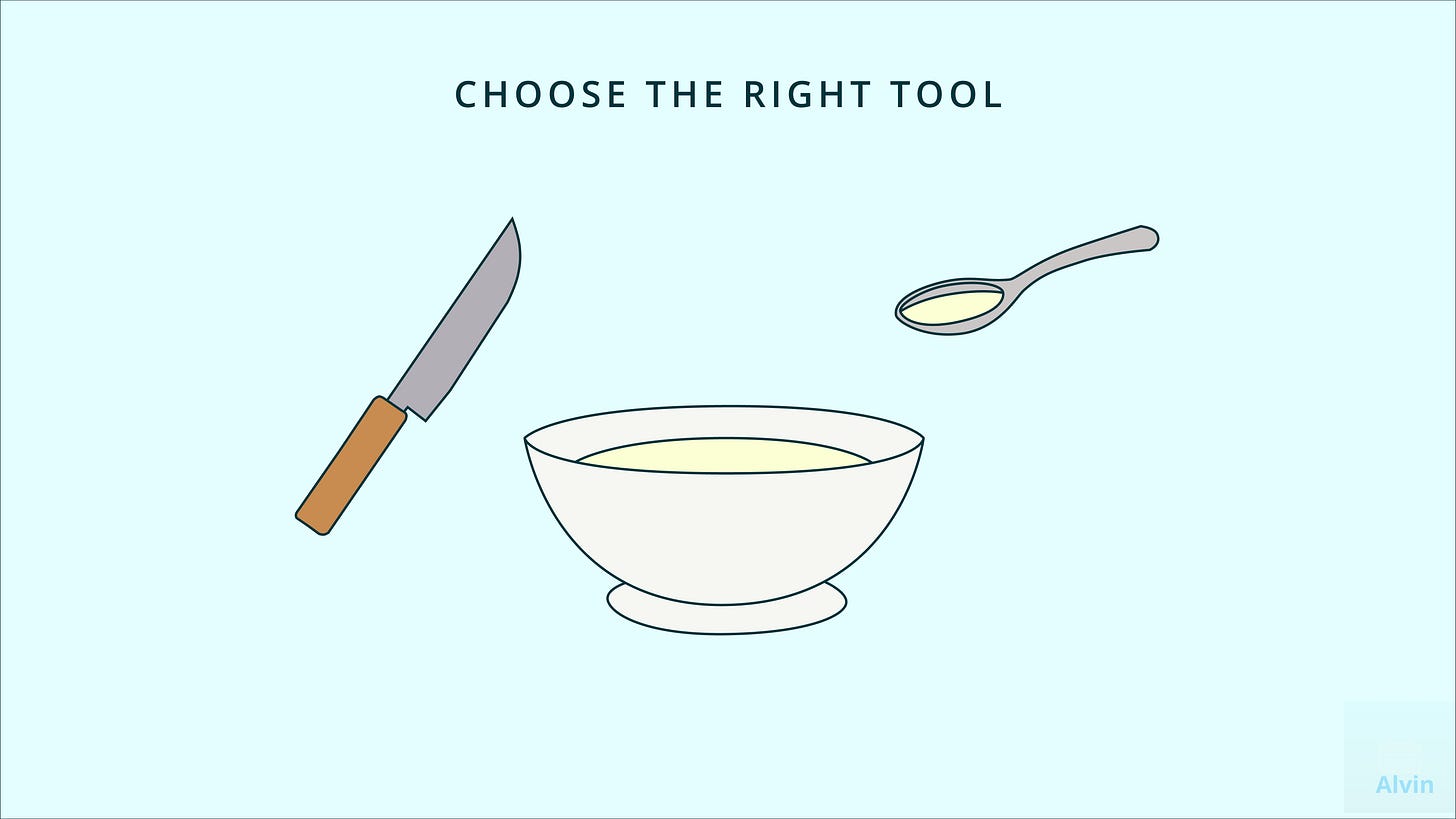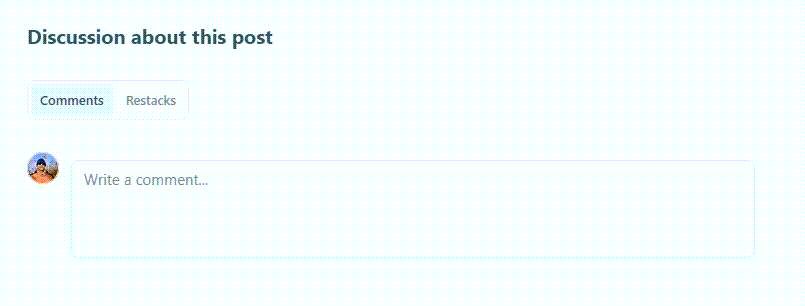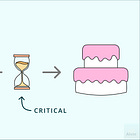Dive 111: How Platforms Shape People
Hey, it’s Alvin!
Ever tried hammering a screw?
It’ll go in. Eventually. But it’ll be slow, tiring, and it may even ruin what you’re building.
That’s what it’s like trying to build a community on a broadcasting platform.
The tools we use shape not only what we build, but how we interact. Most of us don’t realize how deeply the design of our digital tools influences human behaviour. But it does.
Every day.
Quietly.
Let’s take Substack.
After years of writing on the platform and watching other writers wrestle with its limitations, I realized:
Newsletters, by design, are terrible for building community.
Those who have a community on newsletter platforms like Substack almost certainly brought it over from elsewhere where it’s sustained.
One writer I know is leaving Substack because he felt it’s gone from a “writing-focused engine into yet another social media platform.” He’s looking for:
…a community of engaged, passionate and curious readers who are going to comment, discuss and interact with other readers…
He’s not wrong to want that. But he’s missing the bigger picture.
As someone who’s been designing software for almost 15 years with an educational background in human-computer interaction, I’ve seen this mistake play out across platforms again and again.
So today, I’ll show you why newsletter platforms like Substack are the wrong tools for community building. And I’ll share with you tools designed for exactly that purpose. Even if you’re not trying to build a community yourself, understanding how your tools shape your interactions might just change how you use them.
Let’s dive in.
The medium is the message.
- Marshall McLuhan
The Newsletter is the Message
Why are newsletter publishing platforms like Substack poor for community building?
Two main reasons:
It’s too asynchronous.
It’s too authoritative.
Email newsletters are slow by design. Readers may comment on a post hours later. If not days later. So, it’s hard to build momentum for meaningful discussions.
With Substack, there are two main ways to interact with a post. If you’re on the platform, there’s a comment section beneath each post. But that design implies that any conversations that happen below a post must relate to that post. The design of the comment section passively discourages going off-topic even if the author allows it. But that limits the potential for meaningful conversations.
The other way to respond is by replying to the emailed newsletter post. But then your conversations are just between you and the author. While these can be valuable, you’re still missing insights from third parties who might have inspiring ideas that neither of you considered. The most mind-blowing discussions I’ve ever had involved third party interjections mid-conversation.
But this doesn’t really happen, even in the comment sections, because newsletter platforms are examples of broadcasting platforms. There’s an implied one-to-many relationship between producers and consumers. And while the consumers (i.e. the readers) can interact with one another, most interactions are between the writer and reader. If they happen at all.
This makes a platform like Substack authoritative. Because Substack centers on the author. Others comment on the piece, but not with their own. This hierarchy limits community-building dialogue.
Long-time readers will know I tried responding to others’ posts with long-form responses of my own. I tried to have long-form peer-to-peer exchanges. It was my way of trying to build a community of sorts. But it never took off. Because even the people who claim to want lively, thoughtful discussions won’t respond outside their own curated space. But if even the creator won’t think outside their box, then why would their followers?
If you think about it this way, Substack is like Twitter/X but for longer-form content.
Or Substack is like YouTube, but for written content.
They are all broadcast media.
So, it makes complete logical sense that Substack would veer into those territories with its “Notes” and “Video” features, to the dismay of some writers who have since left the platform.
The Discord is the Message
If Substack is like a TED talk, Discord is like a dinner party.
There’s a reason many YouTubers have a Discord server, subreddit, or an old-school discussion forum. While each of these options have their own issues, they are all better for community building. Consider Discord…
Discord servers can be branded, but they work like community spaces.
They’re structured into rooms, not posts. Of course, users can set up spaces for topical discussions. But Discord’s design makes that optional.
The hierarchy (e.g. mods and admins) is soft and role-based rather than content-driven.
It has a social feel. People drift in and out of topics at their leisure.
A Discord server can be set up so people aren’t confined to a specific post or topic. You feel freer to chat with other people, not just the author of a post or the owner of the server.
I know a few writers on Substack who each went on to host their newsletter on a custom website with strict personal branding. The challenge of hosting a newsletter on a custom site is it shifts the focus of the newsletter away from the community towards the creator. The creator is implying, “this is my space,” which restricts freedom for fruitful discussion if:
Comments are moderated from the top-down.
There’s no visible reader-to-reader interaction.
The main layout only features the author’s voice.
A Discord server or subreddit offers much less customization. But the trade-off is that the focus shifts back to the community. The focus shifts away from “chatting about Bob’s newsletter post” towards “chatting about a topic written by anyone.”
A true marketplace of ideas.
If the design and structure of a medium says, “this is mine”, then no matter how much you say, “I want your input”, people will instinctively hold back.
Discord works because it’s like a party where the host is just another person in the room.
A newsletter (really, any broadcast medium) is more like a TED talk with a Q&A after.
The Medium is the Message
In 1964, Canadian communication theorist Marshall McLuhan coined the phrase,
McLuhan said that the medium holding a message affects the way we perceive the message in significant ways we often overlook. That, in turn, affects how people interact with one another, which affects how society functions.
Substack and other newsletter publishing platforms (including the custom ones) are broadcast mediums. They are designed for one producer to broadcast a message to many consumers. While each consumer can interact with the broadcaster, this hierarchy discourages quality cross-consumer interactions. And interactions from each consumer to the producer don’t scale.
So, if you’re ever looking to build a community, it helps to think about how you want to shape the interactions you want to see. Then, choose the technologies that are designed for it. That probably means you’d need a place where:
You (and users, in general) are not the center of attention; the topics are.
People are free to drift in and out of topics.
Chats can be about whatever topics with minimal guidelines and rules about what can be discussed.
The medium is the message.
Once you understand that, you’ll find more success building what you want by making the most of what you’ve got.
Reply to belowthesurfacetop@gmail.com if you have questions or comments. Or, like I said, you can also leave a comment below the post on Substack if you like. Let me know if you’d like me to start a Discord for this newsletter, too. I’m not entirely joking about that.
If you enjoyed this Dive, check out Dive 99. There, I explore how Twitter/X shapes human behaviour, too.
Thank you for reading. Choose your tools wisely. And I’ll see you in the next one.





Very interesting—thank you Alvin!—I appreciate you bringing your expertise to bear on this issue. I personally don’t want to build a community but I’d like to be part of a community as interesting as Write of Passage once was.